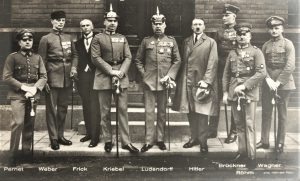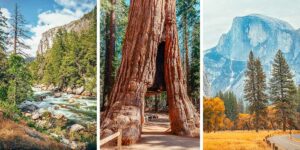Traditional wayfinders of Polynesia, Micronesia, and Melanesia relied solely on natural elements such as celestial bodies, the winds, swells, the climate, and birds to navigate their way through the vastness of the Pacific Ocean. Traditional wayfinding is the practice of navigating that encompasses these natural elements to provide guidance on voyages. Pacific Islanders shocked early English sailors with their ability to manage long distance voyages, a practice that dates back to about 3000 BCE. This incredible practice begs the question: how were these people able to navigate without any aid from the kinds of navigational tools that we often use today? One answer that has been argued by cultural scientist Harald Haarmann is that they were able to instrumentalize their “refined perception of natural phenomena.”1
Wayfinding was not always recognized as an established talent of ancient Pacific Islanders. Early-modern Europeans believed that early Polynesians had probably drifted off-course during routine travel and accidentally discovered islands throughout Oceania. It was not until Captain James Cook observed the native people of the Hawaiian Islands that the notion that they had advanced navigation techniques slowly started coming into light.2 The earliest estimated movement of people to Oceania was between 3200 and 2800 BCE.3 After more extensive studies, archaeologists today have been able to determine that ancient Pacific Islanders had settled several islands before they came in contact with European settlers. Evidence shows that between 1290 and 1120 BCE, islands of Melanesia and Micronesia were being settled. In another flow of migration between 1120 to 1025 BCE, a period of heavy migration to islands such as Hawaii, Rapa Nui, and New Zealand took place.4 To understand how these voyages were successfully executed without the use of navigational instruments, we will look at some methods that wayfinders used in order to sail their way across the Pacific.

Master navigators began by calibrating their positions according to celestial objects, such as the sun, the moon, and constellations. Stars rise in the East and set in the West. They first chose a primary set of stars and constellations, which they knew would eventually set on specific points on the horizon. When the view of the horizon became obstructed, for example, by clouds, they would need to reference a secondary set of stars in the night sky. When this happened, navigators had to recalibrate themselves “by glancing at any section of the night sky, much as we can by glimpsing any part of a thoroughly familiar room.”5 When faced with challenges regarding the obstruction of their view of the sky, navigators resorted to their observations of other directional indicators to orient themselves. By referencing waves and ocean swells, or by observing certain birds, navigators could find indication of their proximity to land.
There are two forms of fluctuations that navigators referenced when observing the ocean itself. The first were ocean waves. Waves are ignited by local winds, which are winds that are confined to small spatial areas that range “from a few miles to 100 miles in width.”6 Waves were increasingly useful directional indicators when embarking on inter-island travels. On the other hand, navigators referenced swells during long distance voyages because they were not easily influenced by abrupt changes in wind patterns. The endurance of swells can last from a week to a month.7 Their consistency is what allow them to be exceptional directional indicators. Navigators also occasionally referenced certain types of birds to determine their location. While it may be unsure what birds ancient navigators used to detect their proximity to islands, we can look at how those that still practice traditional wayfinding use birds as an aid for navigation.8 There are two birds that serve as the most prominent indicators. The White Tern and the Brown Tern both sleep on islands at night and at dawn they embark on fishing trips. The Brown Tern is known to travel about 40 miles out to sea, while the White Tern can travel as far as 120 miles out. When wayfinders detect these birds in the day, they closely keep track of them. When the sun gets low and the birds retreat, they use their flight paths to indicate the direction of the island. “They know the island is close even though they cannot see it.”9
It is incredible that ancient voyagers acquired the skills to look and feel their way through the Pacific. Their lack of technical navigational tools did not hinder their travels.10 This craft is still heavily practiced throughout Oceania. Although the practice was under threat of modernization and westernization, the Polynesian Voyaging Society, which is based in Honolulu, Hawaii, has gone to great lengths to lead a revitalization of traditional wayfinding.
- Haarmann Harald and Claire Brennan, The Hawaiians and other Polynesian Seafarers Developed Navigation Methods Based on Observation of Constellations and Currents, So that They Could Sail Intentionally from Tahiti to Hawaii and Back (California: Santa Barbara, 2011), 262. ↵
- M. Walker, “Navigating Oceans and Cultures: Polynesians and European navigation systems in the late eighteenth century,” Journal of the Royal Society of New Zealand 42, no. 2 (June 2012): 93. ↵
- Fiona Petchey, Mathew Spriggs, Foss Leach, Christophe Sand, Michael Pieutrusewsky and Katy Anderson, “Testing the human factor: radiocarbon dating the first peoples of the South Pacific,” Journal of Archaeological Science 38, no. 1 (January 2011): 29. ↵
- Janet M. Wilmshurst, Terry L. Hunt, Carl P. Lipo, Atholl J. Anderson, “High-precision radiocarbon dating shows recent and rapid initial human colonization of East Polynesia,” Proceedings of the National Academy of Sciences of the United States of America 108, no. 5 (December 2010), 1815. ↵
- Ben R. Finney, “Re-Learning a Vanishing Art,” The Journal of the Polynesian Society 95, no.1 (1986): 43-44. ↵
- UXL Encyclopedia of Weather and Natural Disasters, 2008, s.v. “Local Winds.” ↵
- G.H. Heyen, “Primitive Navigation in the Pacific Part I,” The Journal of the Polynesian Society 71, no. 34 (1962), 68. ↵
- Taylor White, “On the Use of Birds in Navigation,” The Journal of the Polynesian Society 16, no. 2 (1907): 92-93. ↵
- Nainoa Thompson, “On Wayfinding,” Hawaiian Voyaging Traditions (Accessed March 2017), http://archive.hokulea.com/ike/hookele/on_wayfinding.html. ↵
- Haarmann Harald and Claire Brennan, The Hawaiians and other Polynesian Seafarers Developed Navigation Methods Based on Observation of Constellations and Currents, So that They Could Sail Intentionally from Tahiti to Hawaii and Back (California: Santa Barbara, 2011), 263. ↵



32 comments
Michael Mandujano
This article was very interesting to read. In fact, it is quite surprising how voyagers in seek of new lands navigated throughout the oceans. Considering that these individuals did not have a compass, nor radars like our modern ships and sailors have acquired. I think it is really cool that these sailors would use nature and their personal instincts to navigate through the Pacific and other major bodies of water.
Amanda Figueroa
This article makes me realize how dependent we are on technology now and also, how it has advanced so much. I continued to read because I couldn’t think of how these people could navigate and find their way so well when only using nature as their tool. This article answered all my questions as everything was described and explained very well.
Khoa Tran
It is not suprising that acient navigation did not have the help of technical navigating tools, but instead rely on natures. It is very interesting to see the consistency of nature which make a perfect reference for navigation. It is still fascinating to see that people were able to discover these techniques as early as 3000 BCE. Thank you for a great and informative article.
Tyler Sleeter
Very informative article. It has always fascinated me that ancient travelers were able to move around so successfully by observing the world around them. As you pointed out, I am sure a few places were discovered by accident, as seems to happen occasionally. It is good to hear that the techniques these people used have been preserved and passed down. It would be a shame to lose something that works so well simply because the modern day technology has made it an obsolete skill.
Tara Sellers
The title caught my attention because Moana is one of my favorite Disney movies. It was interesting to find out more about the history of wayfinding. They were so much more involved with there surroundings than we are. I wonder how they learned how to navigate by nature. How many people had gotten lost at see before they learned the necessary tool of wayfinding? I wished the article had gone into a bit more detail about the history than how it was done. Other than that the article was very informative and interesting to read.
Mario Sosa
It is truly amazing how the Pacific Islanders were able to navigate such long distances in the Pacific Ocean by just observing the bird’s flight patterns and making star compasses. What made it even more spectacular was how they were using these techniques since around 3000 BC. If they were able to reach Hawaii, I am surprised that they were never able to land and settle in the Americas. Very informative article, outstanding job!
Alexandria Martinez
This was such an informative article, considering that the only things I knew about wayfinding was from Moana. It is incredible how people used to be able to travel without technology using just the resources that they had around them. It really is amazing, I feel like it is better to have this type of knowledge because our technology sometimes won’t always be there for us and we will need to be able to use other techniques.
Rafael Azuaje
Navigation is becoming a lost art. There are 24 GPS satellites orbiting the earth, and an estimated 2 billion GPS receiver devices. It truly is amazing that traditional wayfinders were able to navigate without tools. Some people couldn’t tell you how to get to their local grocery store. Others still, could not tell you which way is north on a map. I’m glad that some people are working towards preserving these perception based navigation skills.
Ernie Sano
Humanity, along with many other species, can largely attribute its extended survival to its ability to adapt. The natural world is plagued with limitations and difficulties that hinder progression and discovery, or so it seems. The article examines wayfinding in such a way that it projects a sense of accomplishment and innovation onto the advanced minds of civilization. The information found here, can be seen as an example of the overlaying idea that history is not only an advancement of a timeline, but an advancement of human ingenuity and intellect.
Alexander Barrera
This arrival was very unique in it’s own right, I’ve never known anything at all about sea travel and navigation. I found it interesting how you mentioned that navigators use different species of birds to navigate, and how experienced navigators could if all else failed look up into the night sky and get a good estimate, that is something I would be at a loss for words if I saw in person. Very informative article great job.